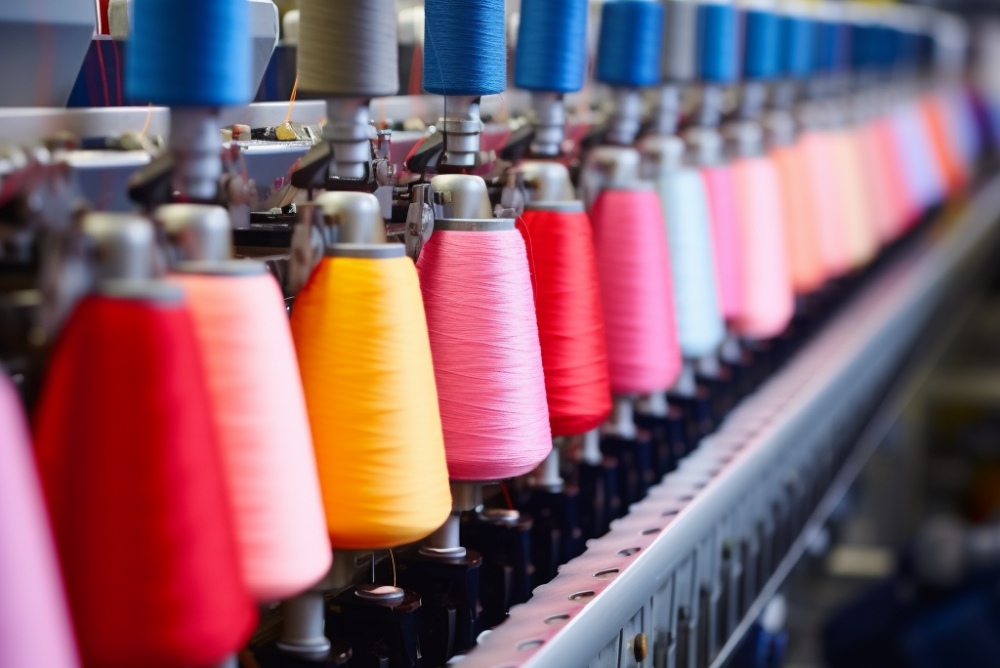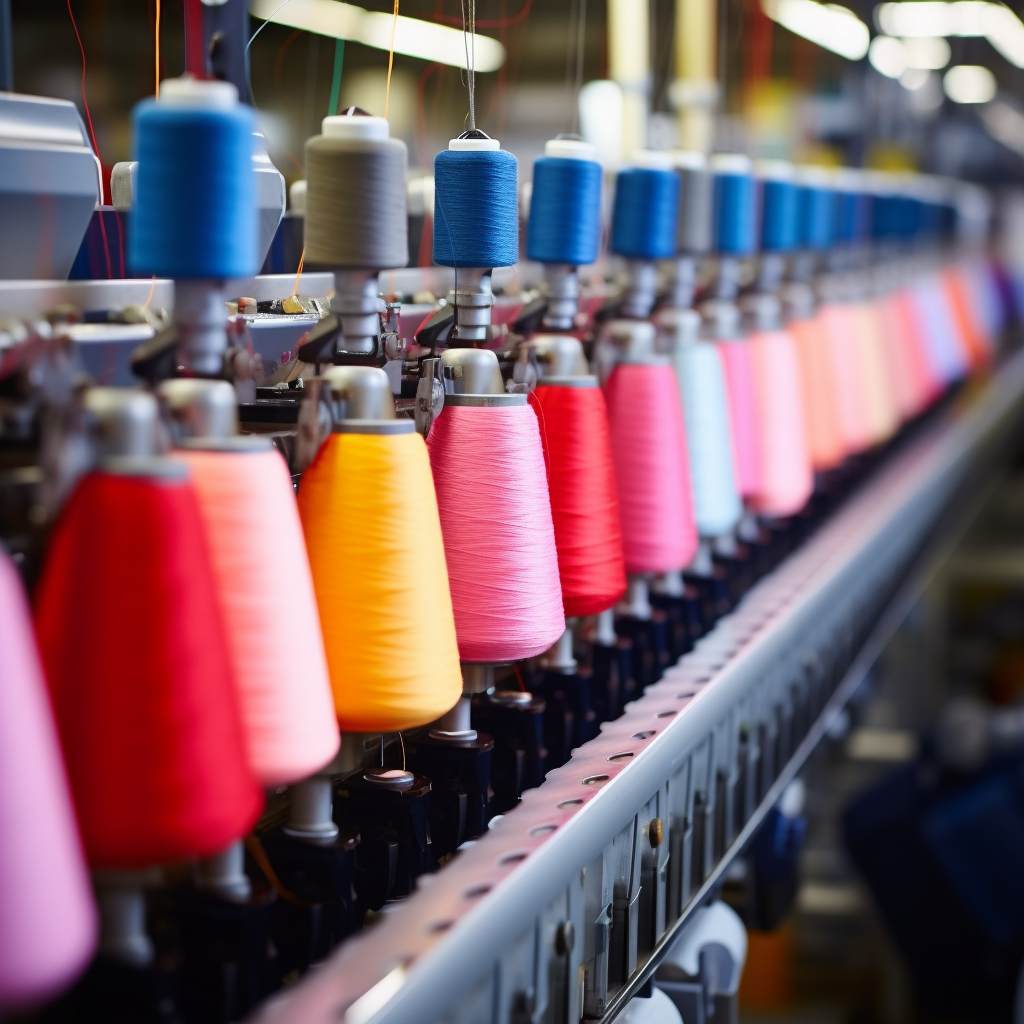The Complete Guide to Combed Yarn and Its Manufacturing Process


Combed yarn is a type of yarn that has been processed to remove short fibers and align the long fibers parallel to each other. This creates a smooth, lustrous, and uniform yarn that is ideal for weaving fine fabrics.
In this article, we will look at the key features of combed yarn, the combing process flow chart, the steps involved in combing, the uses of combed yarn, how it differs from carded yarn, its pros and cons, and the applications where combed yarn is preferred over other types of yarn.
The combing process removes short fibers, arranges the long fibers parallel, and delivers a strong, uniform, lustrous and smooth yarn. The resultant combed yarn has improved strength, flexibility, smoothness and absorbency which makes it suitable for specific applications.
Let's start by understanding what makes combed yarn different from other types of spun yarns.
Features of Combed Yarn
Here are some of the distinguishing features of combed yarn:
- It has parallel fibers which enhances the strength, smoothness and luster.
- It has fewer short fibers as they are combed out in the process. This also enhances smoothness.
- The yarn is more uniform with consistent thickness throughout its length.
- Combed yarn fabrics have a smooth surface, soft feel and improved drape.
- Combed yarn absorbs moisture better and dyes more uniformly.
- The parallel orientation reduces hairiness reducing pilling.
- Combed yarns are stronger than carded yarns.
- It is more lustrous than carded yarn due to reduced crimp.
- Combed yarn is costlier than carded yarn due to the additional combing process.
Process Flow Chart for Combing
The combing process consists of the following key steps:
- Sliver Formation: The raw cotton is processed into a rope-like strand called silver through carding.
- Lap Formation: Slivers are combined and drawn into laps wound on rollers.
- Combing: The laps are fed into the circular comber machine which combs the fibers.
- Top Making: The combed strands or top is wound onto bobbins.
- Drawing: The top is reduced to the required count by passing through roller arrangements.
- Roving Formation: The drawn slivers are slightly twisted to produce the roving sliver.
- Ring Spinning: The roving is fed to a ring frame to produce the final combed yarn.
Steps Involved in Combing
Let us look at the combing process steps in more detail:
- Combing is done on a circular combing machine. The lap is fed between the detaching rollers.
- The nibbed combing cylinder rotates rapidly and combs out the short fibers.
- The remaining long fibers are gathered into strands called tops.
- The combs make up to 900 strokes per minute detaching unsuitable short fibers.
- The top roller delivers the untangled parallel fibers wound into spools.
- Combing may be done twice to ensure short fiber removal.
- The process leaves fibers arranged in parallel order in the top.
- The top is attenuated by drawing to reduce thickness before spinning.
- Drawing aligns the fibers further and improves uniformity.
Uses of Combed Yarn
The features of combed yarn make it suitable for specific applications:
- Fine Fabrics: The smoothness and luster is ideal for high-quality fabrics like shirting, poplin, gabardine, twills, etc.
- Mercerized Fabrics: The improved absorbency suits it for mercerized fabrics.
- Knitted Fabrics: Used to make fine knitted fabrics and sweater knits.
- Hosiery: Suitable for high-quality socks, leggings, etc. needing strength.
- Undergarments: Used in high-end undergarments and lingerie.
- Bedding: Combed yarns produce smooth and lustrous bed sheets.
- Medical Use: Ideal for items like medical gauze needing high absorption.
- High Traffic Upholstery: Strength and durability makes it fit for upholstery.
Difference Between Carded and Combed Yarn
Here are the key differences between carded and combed yarns:
- Carded yarns have more impurities and imperfections compared to combed.
- Combed yarns have parallel fibers while carded yarns have disorganized fibers.
- Combed yarn is more lustrous, smooth and uniform than carded yarn.
- Carded yarns are bulkier, less flexible and have more flaws.
- Combed yarn is 15-20% stronger than carded yarn.
- Carded yarn is cheaper to produce than combed yarn.
- Carded yarn is used for products not needing smoothness like flannels.
- Combed yarn is mercerized more effectively due to parallel orientation.

Pros and Cons of Using Combed Yarn
Here are some pros and cons of using combed yarn:
Pros:
- Smoother and more lustrous fabric
- Better strength and durability
- Improved moisture absorption
- Better dye uptake and color uniformity
- Less pilling of finished fabric
- Ideal for mercerization finishing
Cons:
- More expensive to produce
- Not suitable for fabrics like flannel where bulk is required
- Over-processing can affect softness
- Extra processing increases carbon footprint
- Not ideal for products where lower cost is critical
Conclusion
Combed yarn, through the combing process, delivers a strong, smooth and lustrous yarn by removing short fibers and arranging long fibers parallel. The resultant yarn has many advantages like improved strength, absorbency, dyeability and pilling resistance. However, it is costlier than carded yarn.
The luster, smoothness and strength of combed yarn makes it the preferred choice for manufacturing fine garments and fabrics, mercerized items, hosiery, knitwear, medical supplies and high-end bedding and upholstery. However, carded yarn is still suitable for bulkier fabrics and products where cost is critical.





-500x500.jpg)
-500x500.jpg)
-500x500.jpg)
-500x500.jpg)
-500x500.jpg)